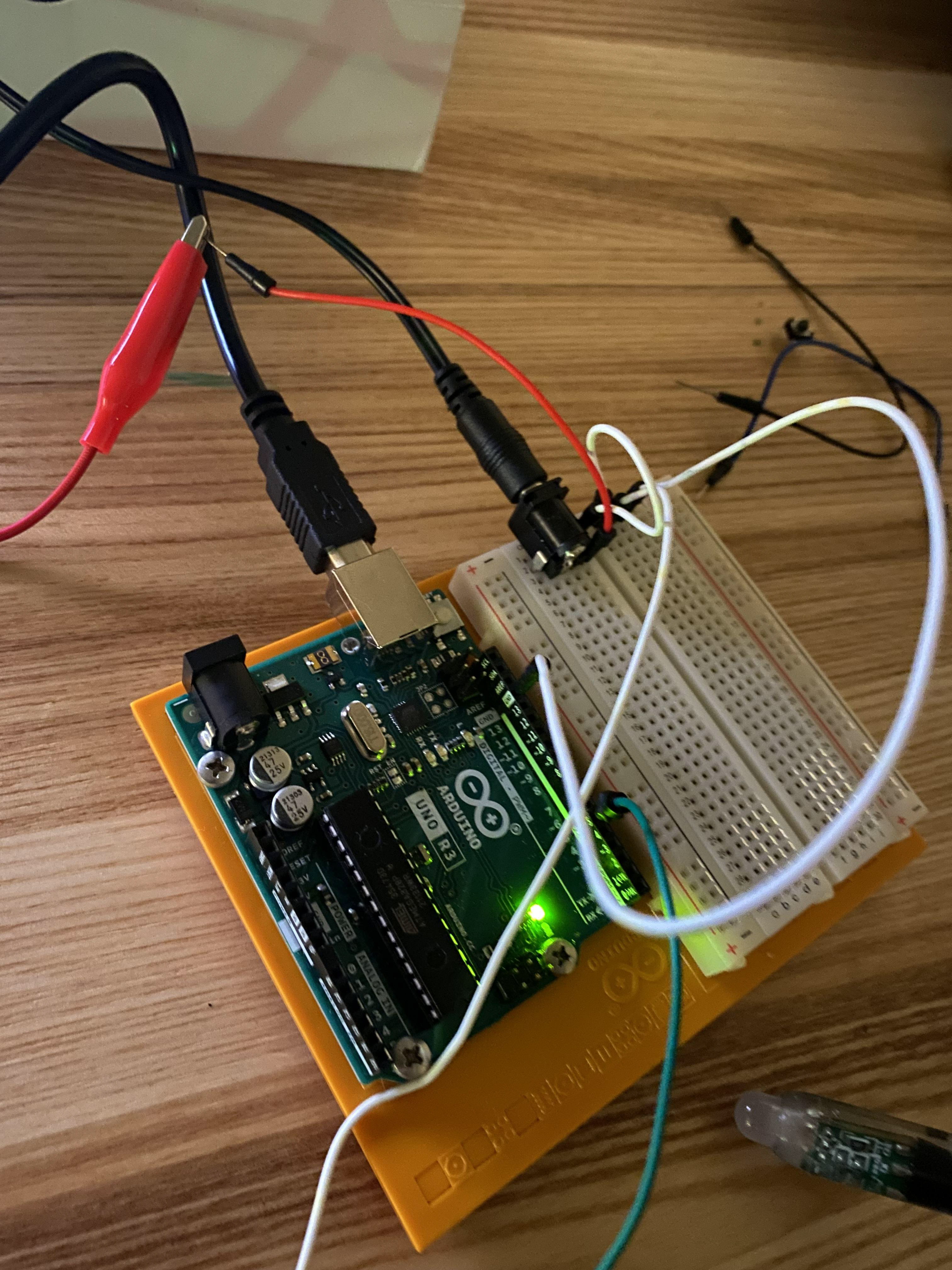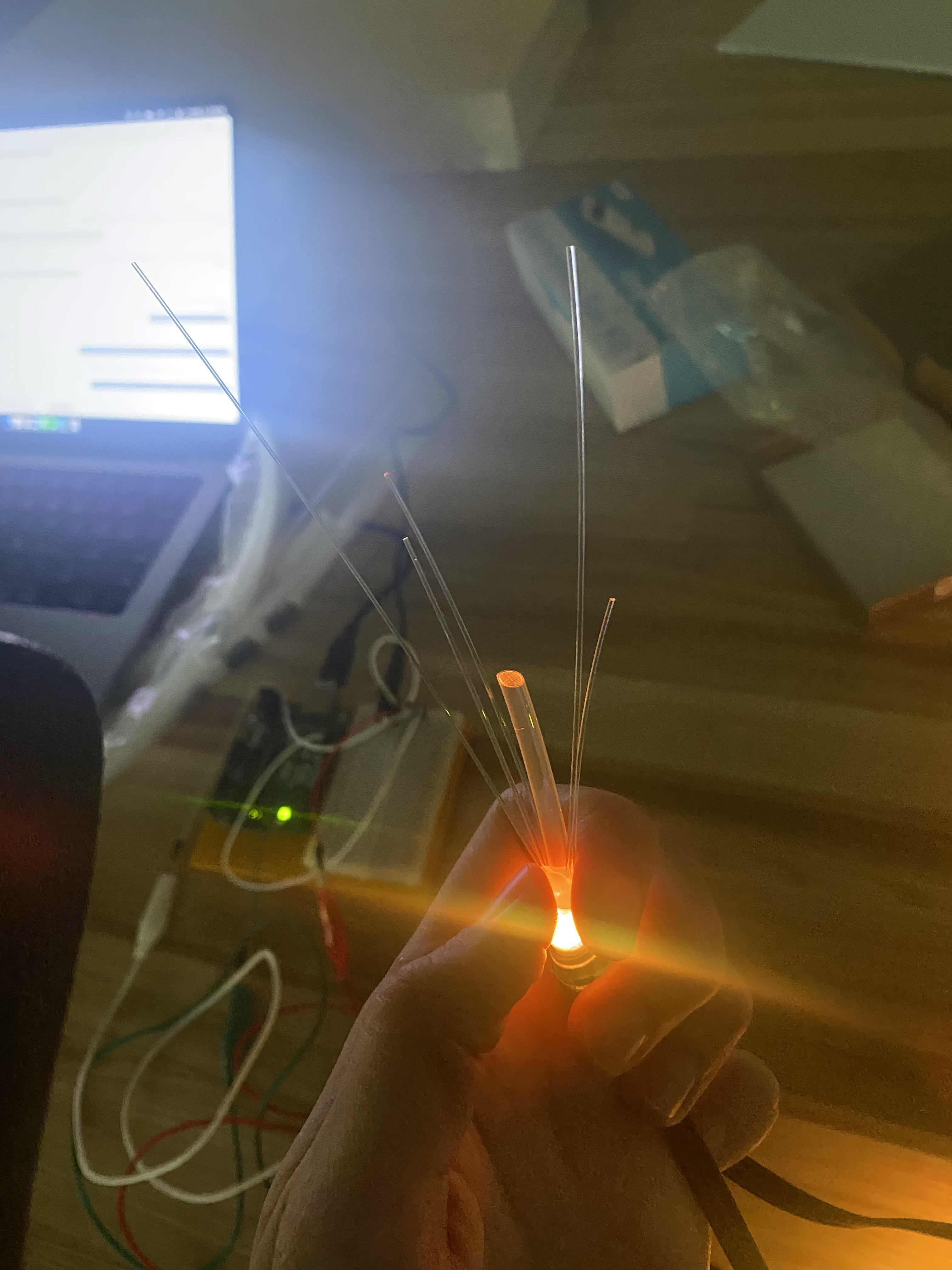background
Mycelium are branching, thread-like hyphae that form the root systems of mushrooms. These web-like structures spread across substrates like compost and soil to search for nutrients necessary for the development of a fruiting body. This organism is incredibly intelligent: not only can it sense and navigate around objects, but it can communicate with other organisms in the ecosystem. (link)
I was inspired by the responsive behavior and aesthetic form of mycelium, which led me to create this very fancy night light.

Underground mycelium

Mycelium w/ mushrooms

Mycelium branches
materials
• Gallery cradled board (24" x 24")
• White gesso
• Gloss varnish
• Electrical tape
• An alarming amount of hot glue
• LED light strip (50 bulbs, WS2811)
• Circuit building materials (jumper wires, 100uF capacitor, 330 ohm resistor, breadboard, push button)
• Arduino Uno
• Ultrasonic proximity sensor
• Motion tracking sensor
process
• Create design → sketch ideas, pick direction, prototype optical bundles
• Prepare the frame → map holes, drill, sand, paint, finish wood
• Program the lights → create circuit, program Arduino, attach sensors
• Create the hyphae → prototype, hot glue, secure bundles to LEDs
• Put it all together → poke hyphae through board

Early sketches

Concept sketch

Interaction sketch

Hyphae design

Building hyphaes

Finished hyphaes (pre-attachment)

Prototyping hyphae mapping

Finished mapping on foam board

Circuit design

Testing light emittance

Finished hyphaes (post-attachment)

Drilled holes in box
